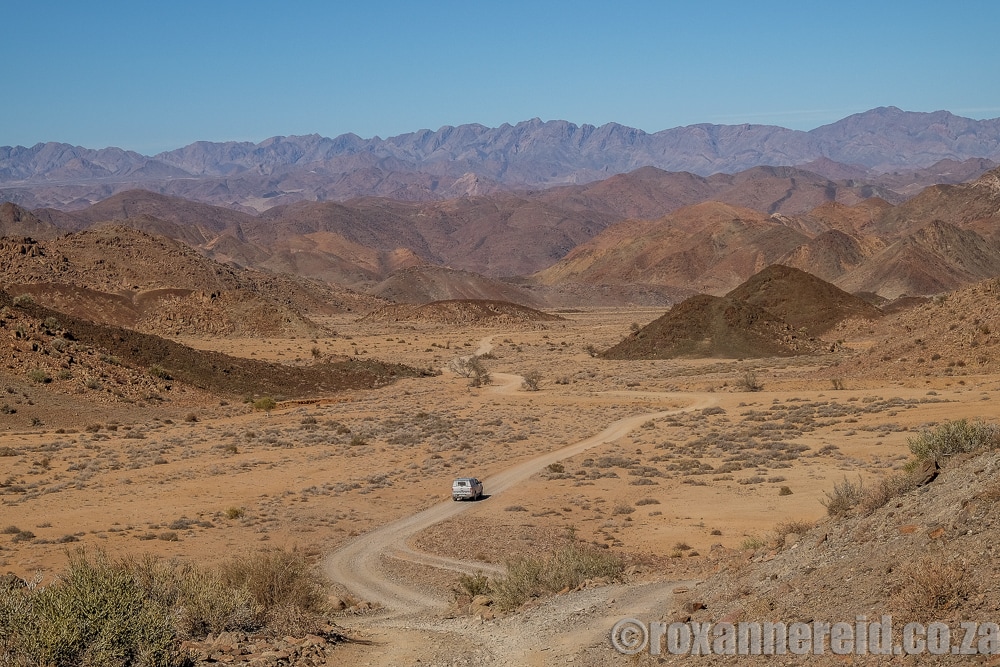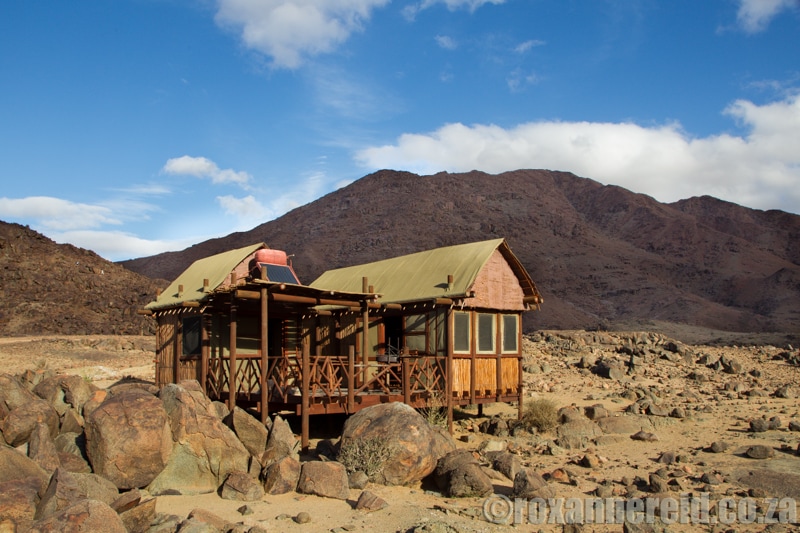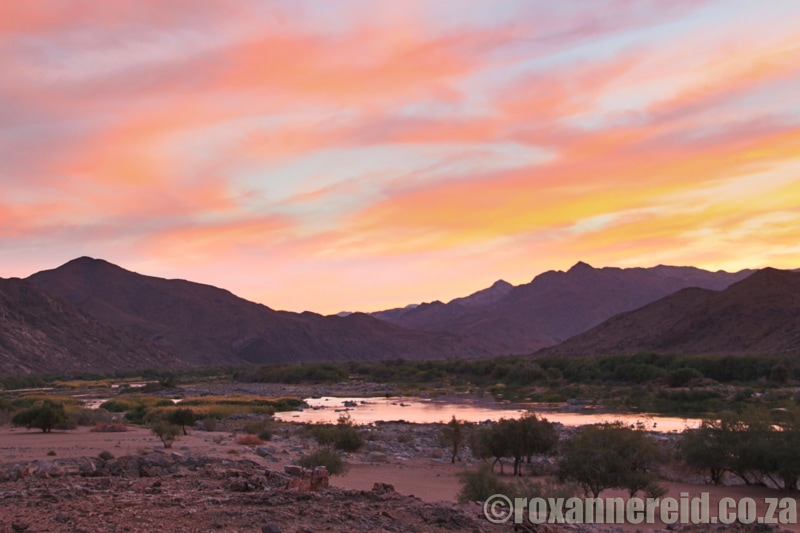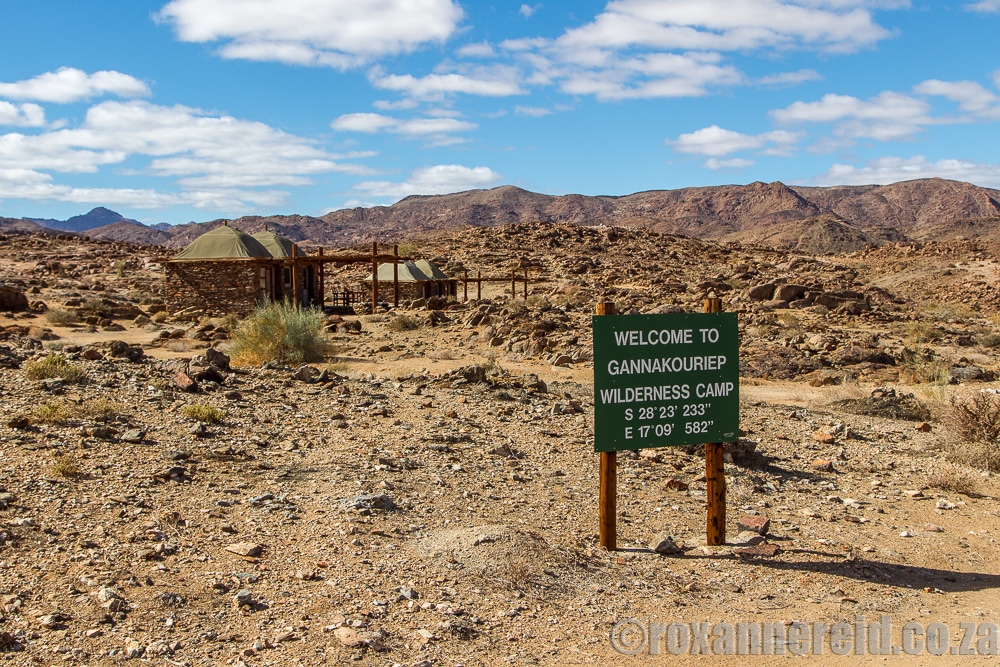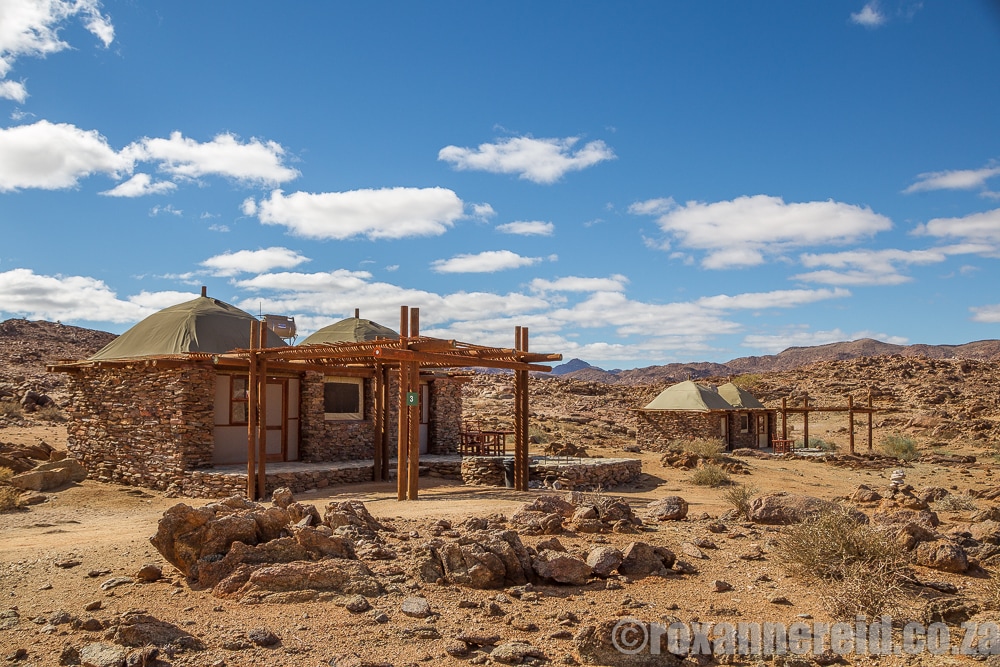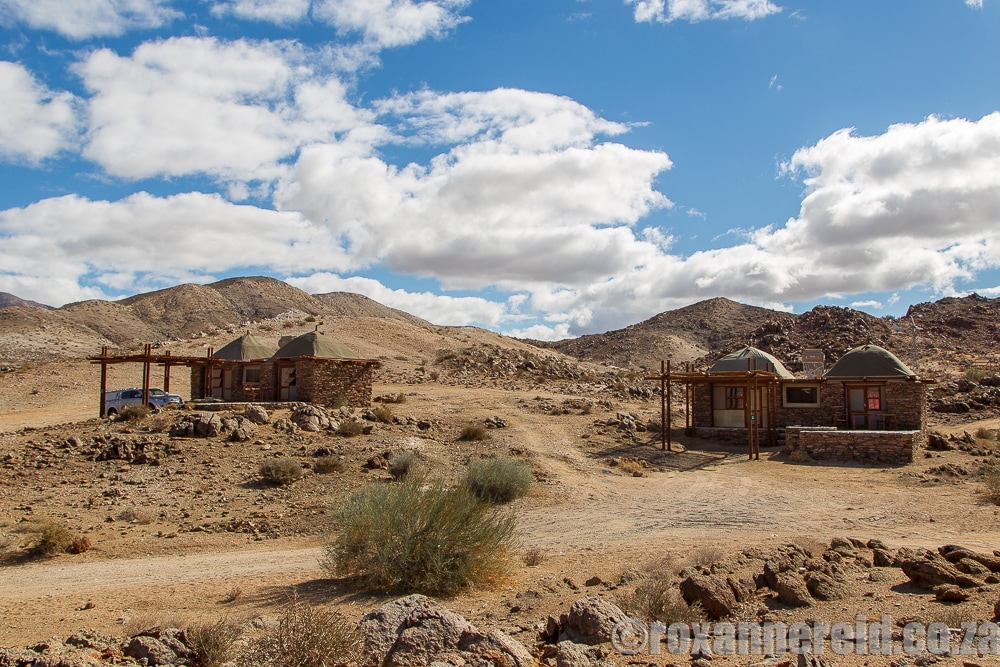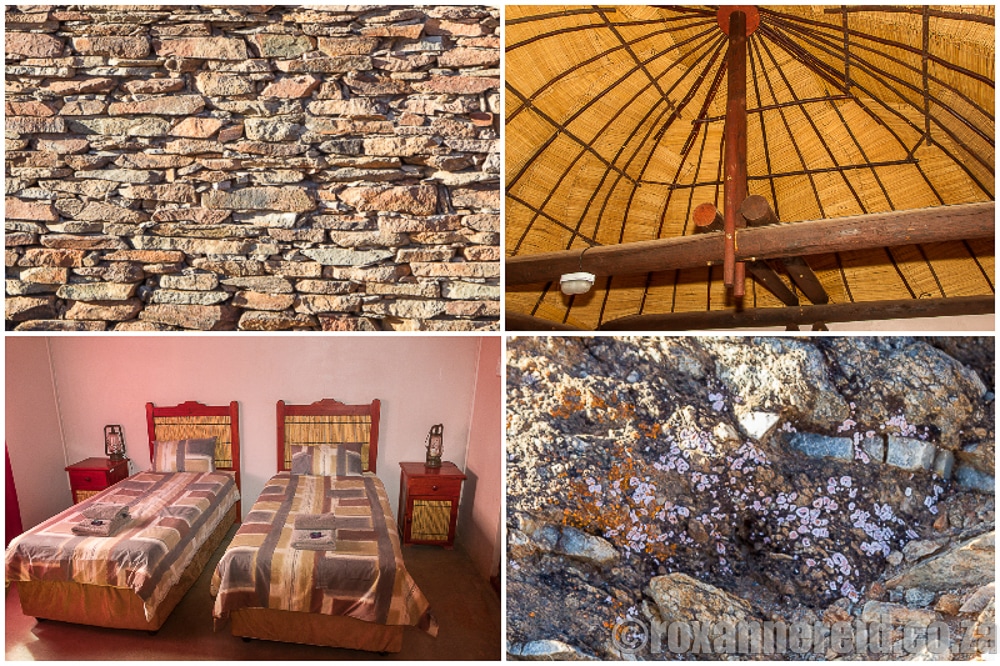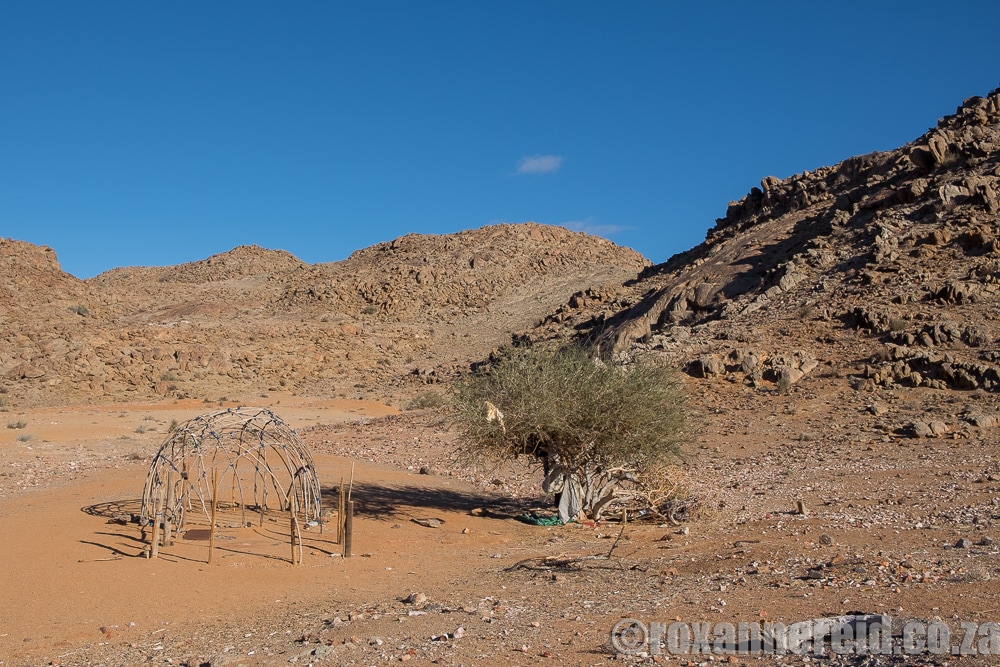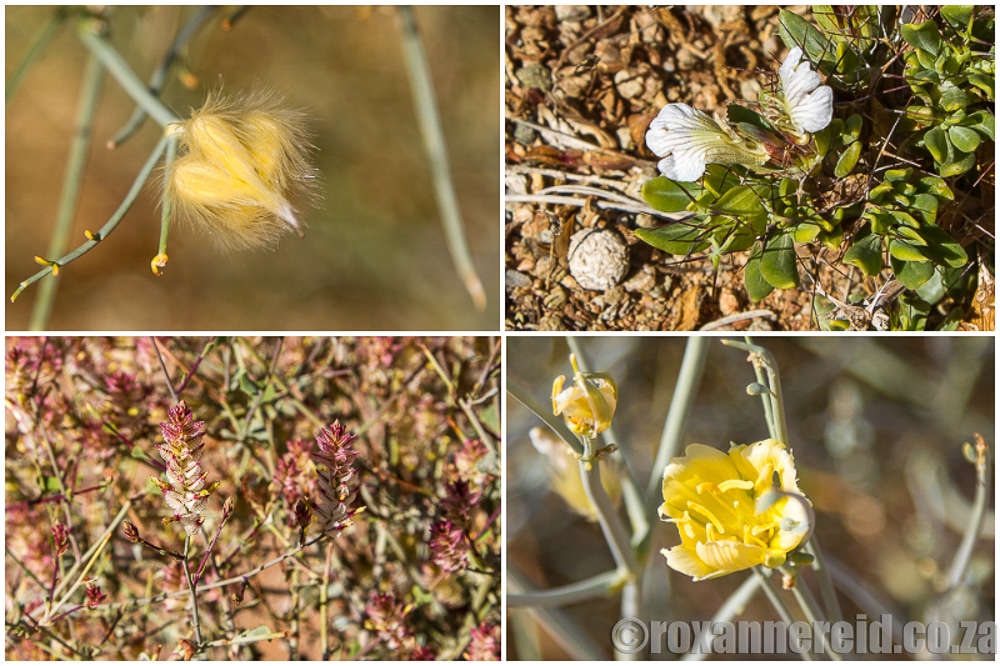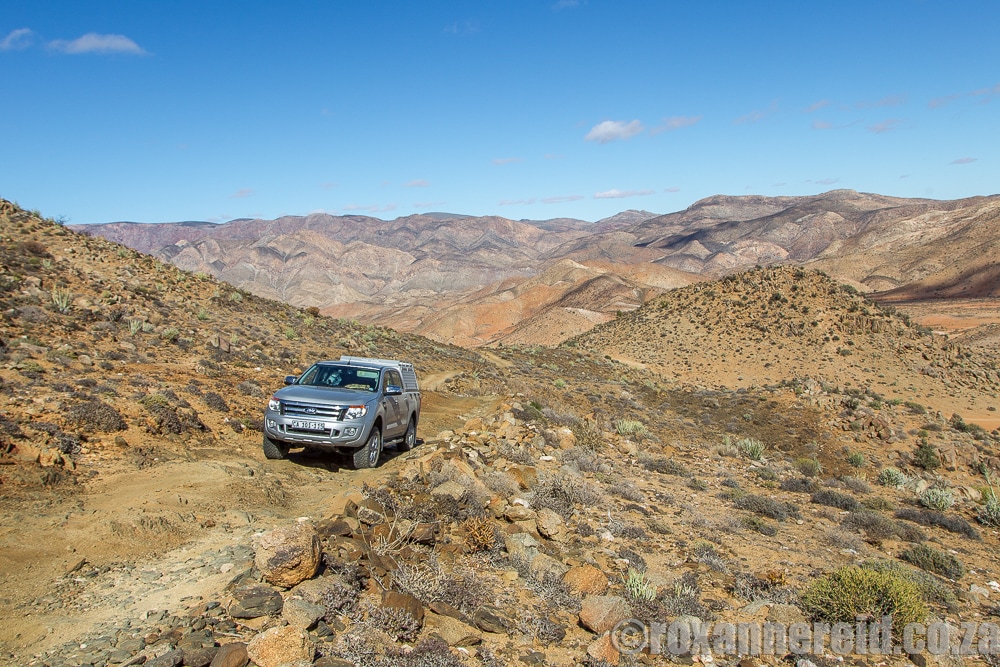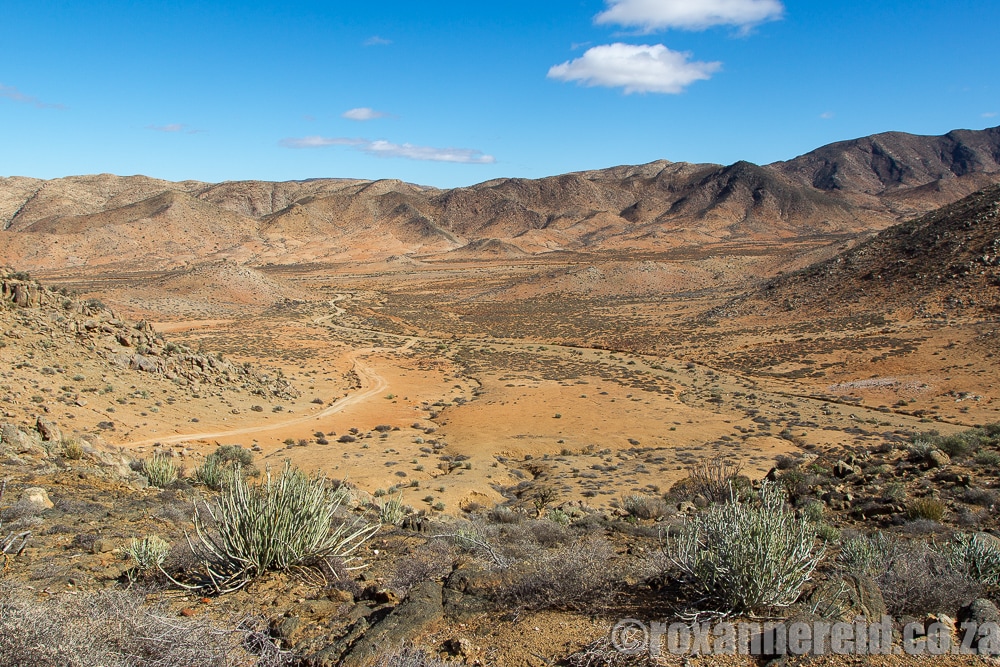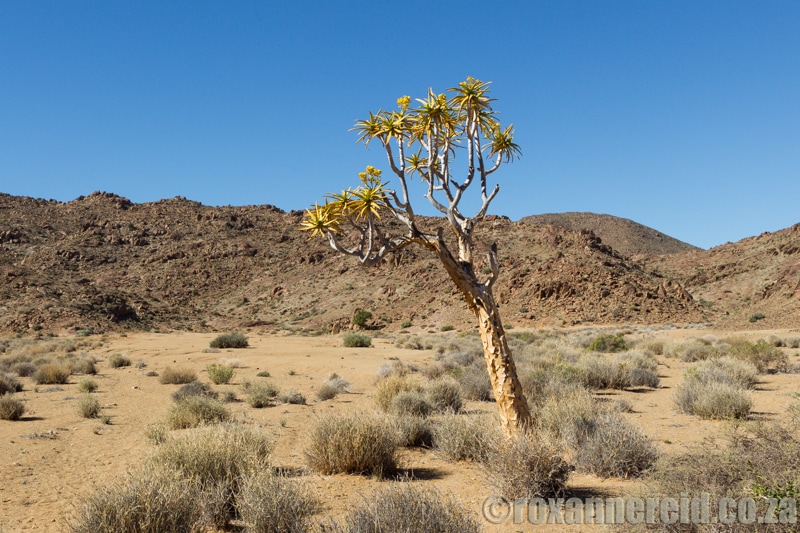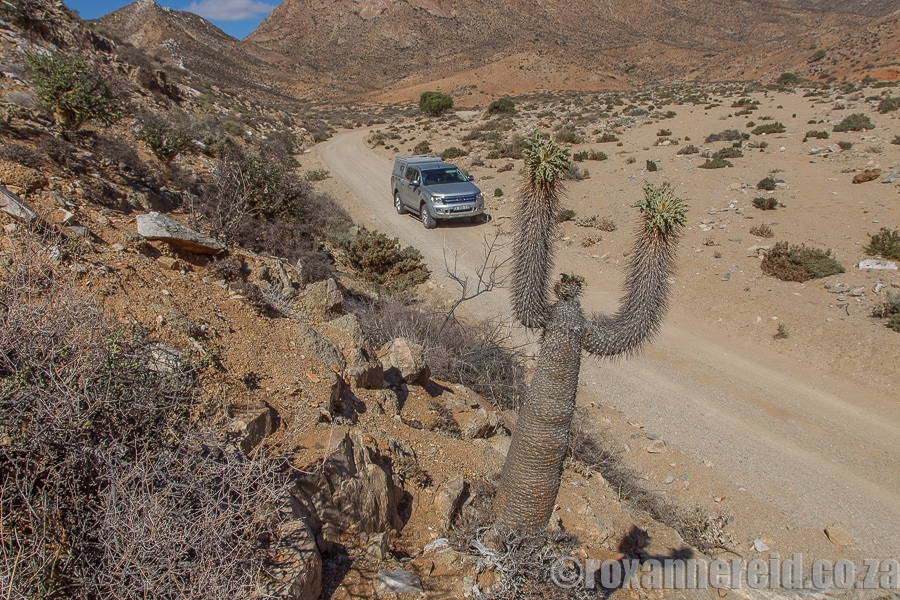
By Roxanne Reid
Prozac for the soul. That’s what I called the chapter about the Richtersveld in my book A Walk in the Park. Four or five visits later, nothing has changed; it’s still a place to rest and reconnect with your soul. Tag along as we visit Gannakouriep camp for the first time, a place to find ‘nothing’ and love it.
Prozac for the soul. That’s what I called the chapter about the Richtersveld in my book A Walk in the Park. Four or five visits later, nothing has changed; it’s still a place to rest and reconnect with your soul. Tag along as we visit Gannakouriep camp for the first time, a place to find ‘nothing’ and love it.
I lost count of the number of times we stopped to admire the mountain desert views or the plants that scrabble their way through rock into the light here in the /Ai/Ais-Richtersveld Transfrontier Park in the Northern Cape.
Some people get high on life by bar-hopping in the Big City. We get high on the great outdoors, being on a back road far from civilisation and steeped in nature. If that’s your thing, the Ai/Ais-Richtersveld is like a quadruple shot of gin to an alcoholic – easy to get drunk and hooked on. Hard not to crave another ‘hit’.
Some people get high on life by bar-hopping in the Big City. We get high on the great outdoors, being on a back road far from civilisation and steeped in nature. If that’s your thing, the Ai/Ais-Richtersveld is like a quadruple shot of gin to an alcoholic – easy to get drunk and hooked on. Hard not to crave another ‘hit’.
We spent a night at Tatasberg Wilderness Camp, beside the Orange/Gariep River, a place that’s difficult to beat for its virtuoso setting. We’ve stayed here before and loved it – see Tatasberg camp, Richtersveld: de-clutter your mind.
Like last time, we sat on the deck and peered into Namibia, watching the river flood with pink as the sun set and the air cooled. A wind was blowing, the camp’s small turbine whirring busily. Luckily, we’d come prepared with lights and torches because the solar power flickered and drained away just as we were getting ready to go to bed.
Like last time, we sat on the deck and peered into Namibia, watching the river flood with pink as the sun set and the air cooled. A wind was blowing, the camp’s small turbine whirring busily. Luckily, we’d come prepared with lights and torches because the solar power flickered and drained away just as we were getting ready to go to bed.
So here’s a request: if you do visit Richtersveld’s wilderness camps, please remember to switch off all lights when you’re not using them – especially when you leave the chalet – so you don’t waste the solar and wind-powered energy the next guests will need.
Gannakouriep Wilderness Camp
Next morning we drove a virgin route (at least to us) to Gannakouriep Wilderness Camp further south in the dry interior, where we hoped the outlook would be just as soulful as at Tatasberg though completely different.
Gannakouriep Wilderness Camp
Next morning we drove a virgin route (at least to us) to Gannakouriep Wilderness Camp further south in the dry interior, where we hoped the outlook would be just as soulful as at Tatasberg though completely different.
Along the way we drank in view after mountainous view where the silence was thick in our ears. We took it slow, stopping to look at a plant, take a photograph or marvel at the changing colours of the rocks in this desert landscape.
When we arrived at Gannakouriep at 13:00 the place was deserted and our cottage locked.
When we arrived at Gannakouriep at 13:00 the place was deserted and our cottage locked.
For 20 minutes we amused ourselves by watching little birds and exploring the surrounding rocks, then two rangers came barrelling along in a bakkie. They’d brought the key to our cottage. Apparently someone had forgotten to leave it in the door for us. I hoped the rangers had enjoyed getting out into nature, that it hadn’t been just a chore.
The four Gannakouriep cottages are simple, with stone outer walls in the old-fashioned no-cement style. The domed roof has canvas on the outside and reed mats on the inside, referencing the style of Nama matjieshuise that are traditional to these parts.
A domed matjieshuis is made entirely of reed mats. The stems shrink, allowing the wind to blow through the gaps and cool the structure down. They’re quick and easy to dismantle and put up again – perfect for Nama shepherds who have to follow their goats to where they can find some food.
A domed matjieshuis is made entirely of reed mats. The stems shrink, allowing the wind to blow through the gaps and cool the structure down. They’re quick and easy to dismantle and put up again – perfect for Nama shepherds who have to follow their goats to where they can find some food.
Inside, Gannakouriep’s floors are plain cement. The salty borehole water has taken its toll – there are rust patches on the sinks and taps, and the wooden bathroom door is bleached white up to waist height. But if you’re not looking for luxury, the cottage’s simple design is appealing: a bedroom and a kitchen/living room, with a bathroom between the two.
A stone patio looks out over koppies and you can relax and feel the heat seep out of the day, watch sunset paint the sky in shades of pink as far as the eye can see. The ground around the cottages is scattered with quartz, small hoodia plants hiding in the scree, pink and mauve lichen on the rocks.
Best of all, we had the entire camp to ourselves, just us and the familiar chats, the Cape buntings and sun-basking lizards. This kind of ‘nothing’ is my idea of heaven.
Best of all, we had the entire camp to ourselves, just us and the familiar chats, the Cape buntings and sun-basking lizards. This kind of ‘nothing’ is my idea of heaven.
Domrogh Pass
We took Domrogh Pass back to Sendelingsdrift the next morning. It carried us past zebra-striped mountains, rock formations and intriguing little plants, then twisted steeply uphill to give wonderful views down into the valleys below. At the top we switched off our engine, opened the windows and listened to that special Richtersveld silence, filling our souls with it until our next visit.
We took Domrogh Pass back to Sendelingsdrift the next morning. It carried us past zebra-striped mountains, rock formations and intriguing little plants, then twisted steeply uphill to give wonderful views down into the valleys below. At the top we switched off our engine, opened the windows and listened to that special Richtersveld silence, filling our souls with it until our next visit.
We watched two klipspringers bounce up a steep slope as if it were no effort at all. They have a rubbery substance under their hooves for grip, much like your heavy-duty off-road tyres. Another clever adaptation is that the hair on their coat is hollow to insulate them against extremes of heat and cold, making them well suited to the rocky extremes of the Richtersveld.
Some swallowtailed bee-eaters, a dusky sunbird, a sprinkling of botterboom plants and aloes punctuated our drive. We spotted a few spiny-stemmed halfmens succulents that grow only here in the lower Orange River Valley of South Africa and Namibia. Research is currently investigating whether halfmens numbers are diminishing, and pondering the role played by illegal seed collection, insect parasites, grazing and climate change.
Some swallowtailed bee-eaters, a dusky sunbird, a sprinkling of botterboom plants and aloes punctuated our drive. We spotted a few spiny-stemmed halfmens succulents that grow only here in the lower Orange River Valley of South Africa and Namibia. Research is currently investigating whether halfmens numbers are diminishing, and pondering the role played by illegal seed collection, insect parasites, grazing and climate change.
The Richtersveld is a UNESCO World Heritage Site that deserves a deeper look. To get the best from your visit, buy an info brochure at reception in Sendelingsdrift. It’s packed with info about the park’s geology, neighbouring communities, plants and animals. Then take time to stop and look at plants and small creatures, to appreciate the different rocks and strata. Don’t forget to gaze up when it’s dark to enjoy the magnificent night skies.
Tips for visiting the Richtersveld
Find the article interesting? Pin this image!
- The quickest way to the entrance gate of the South African side of the /Ai/Ais-Richtersveld Transfrontier Park is via Port Nolloth and Alexander Bay, just 90km away. If you aren’t in a hurry, a more scenic route is through the small settlements of Eksteenfontein, Lekkersing and Kuboes, where you can stop over to meet the locals.
- You need a high-clearance 4×4 vehicle.
- Whether you’re camping or staying in wilderness cottages at Tatasberg or Gannakouriep, you must be self-sufficient with food, medical supplies and recovery equipment. Bring your own firewood and drinking water.
- Invest in a good map and take a GPS loaded with good map software.
- It’s a good idea to hire a satellite phone in case of emergencies because there’s no cellphone reception beyond Sendelingsdrift. Write down the number of the duty manager at Sendelingsdrift before you leave on your adventure into the remote regions of the park.
Find the article interesting? Pin this image!
You may also enjoy
20 things you may not know about the Richtersveld
Why you have to visit the Richtersveld wilderness
Copyright © Roxanne Reid - No words or photographs on this site may be used without permission from roxannereid.co.za
20 things you may not know about the Richtersveld
Why you have to visit the Richtersveld wilderness
Copyright © Roxanne Reid - No words or photographs on this site may be used without permission from roxannereid.co.za
